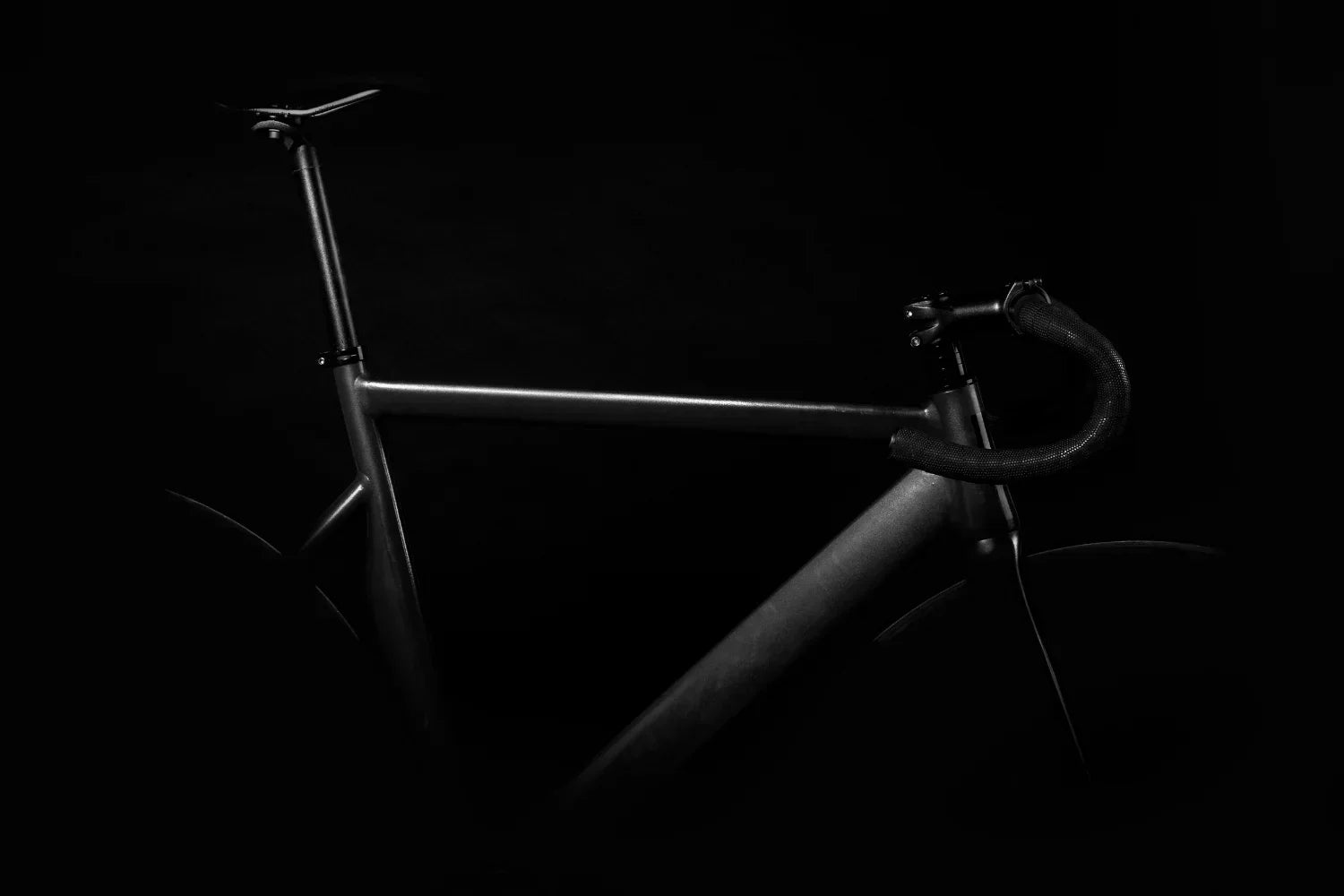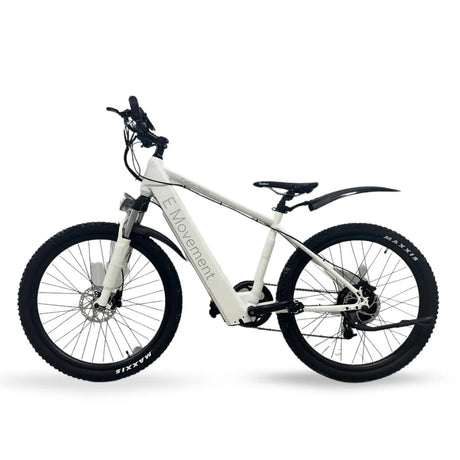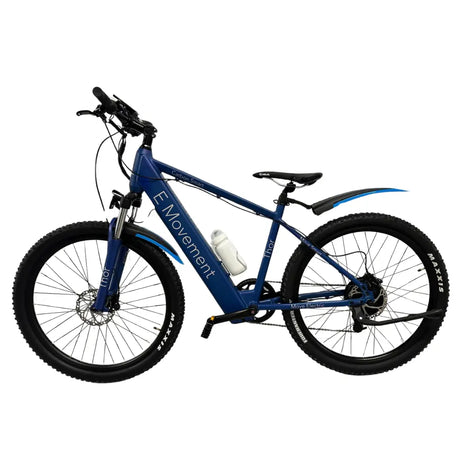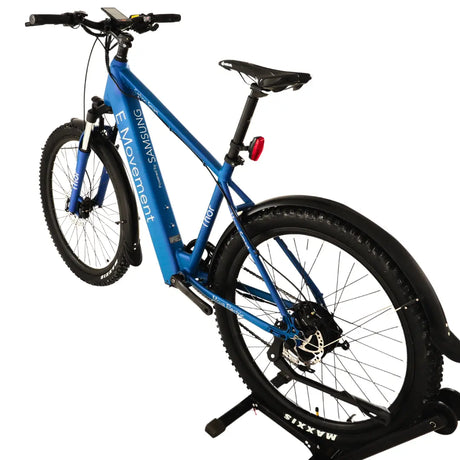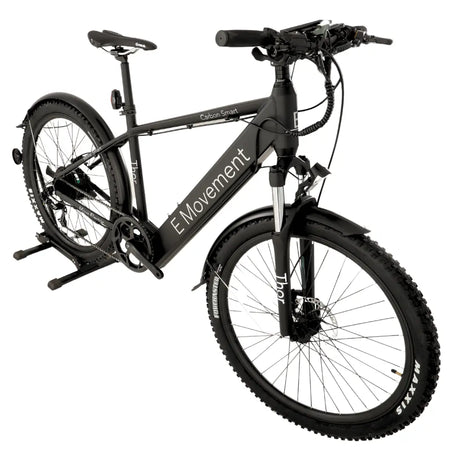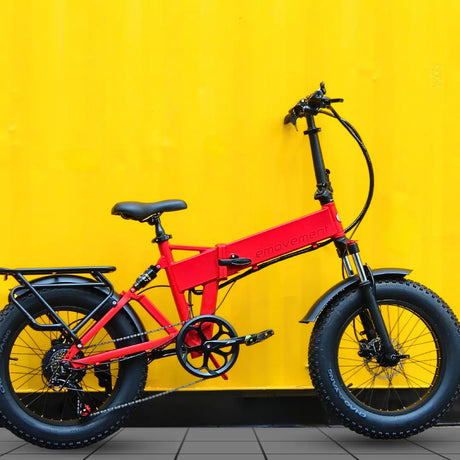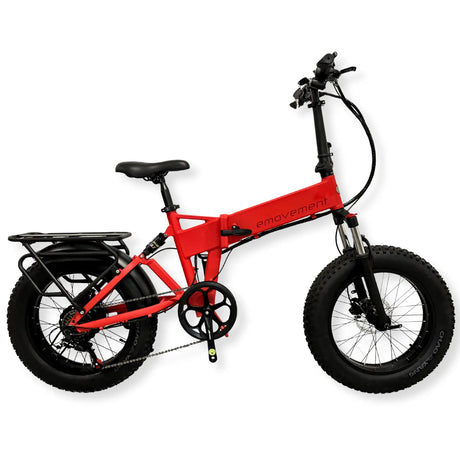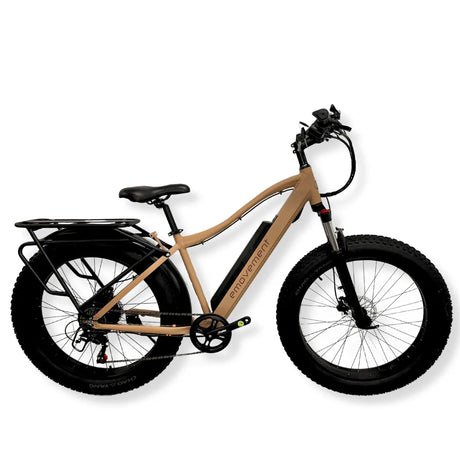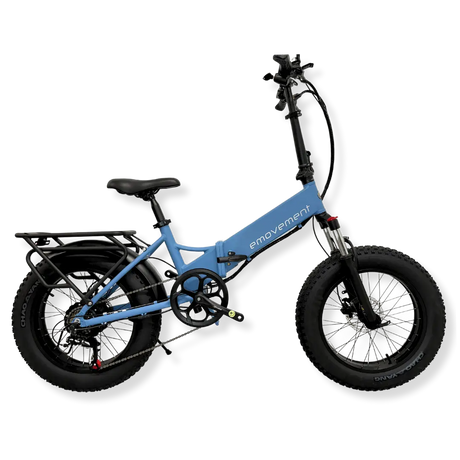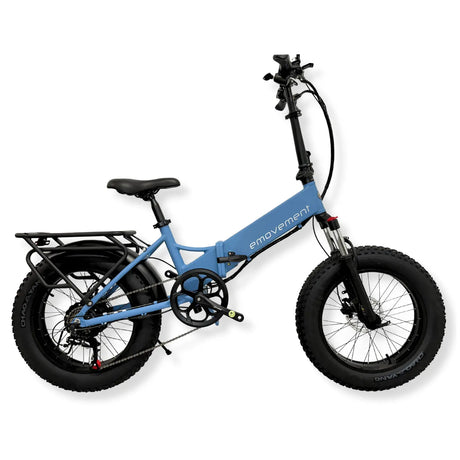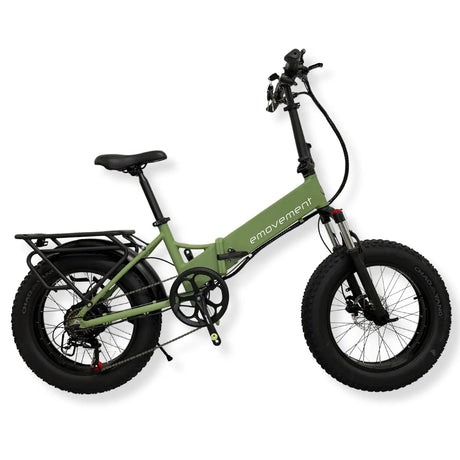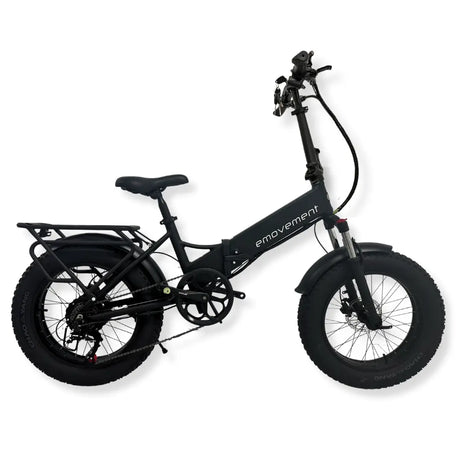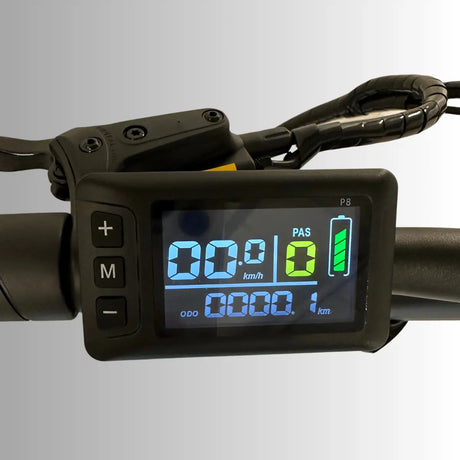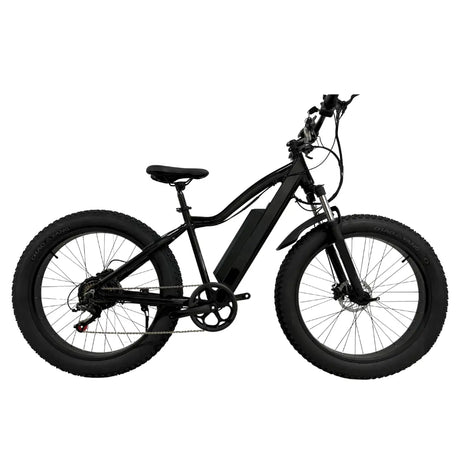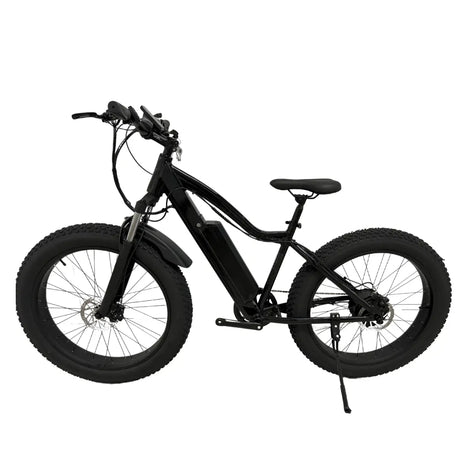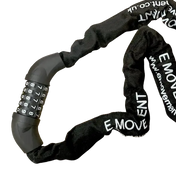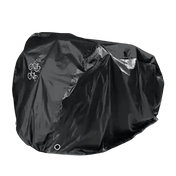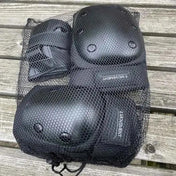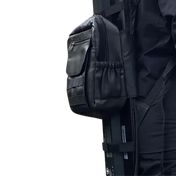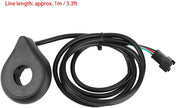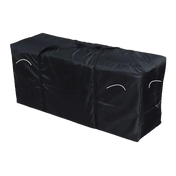Inside this Article:
- Understanding of eBike Throttles
- eBike Throttles Types
- Choosing the Right eBike Throttle Type for Your Needs
- Technical Considerations
- Conclusion
- FAQs
- 1. What’s the difference between a twist throttle and a thumb throttle:
- 2. Can I Install a throttle on any eBike?
- 3. How do throttles affect battery life?
- 4. Are throttles safe for beginners?
- 5. What should I do if my throttle stops working?
- 6. What are the different types of throttles?
- 7. What Class is eBike Throttle?
- 8. What is the difference between a full twist and a half twist throttle?
Among the various features that enhance e-biking, throttles play a crucial role. They allow you to speed up and go on long journeys without having to put in any pedalling effort.
Let’s talk about the essentials of electric bicycle throttles, from understanding their function and importance to exploring different ebike throttle types and technical considerations. Read on to discover how to make the most of your bike’s throttle system.
Before proceeding, please note that in the UK, you can not ride your electric bike in public spaces if its throttle is turned on unless you register and tax it as a moped.
Understanding of eBike Throttles
Understanding throttles can significantly enhance your riding experience by providing immediate power and control. Discover how these features set e-bikes apart and why they are essential for various riding conditions.
What is an eBike Throttle?
An electric bike throttle allows you to control the e-bicycle’s speed without pedalling. By twisting or pressing the throttle, you can engage the motor and propel the bike forward. This feature is different from pedal-assist systems, where the motor only activates when you pedal.
Throttles provide an instant boost, making them ideal for quick starts or navigating through traffic. Unlike PAS, throttles let you maintain a consistent speed without continuous effort, offering a more enjoyable ride for riders who prefer minimal exertion or need a break from pedalling.
Why Throttles Are Important
Throttles enhance the cycling experience by providing immediate power and control. Where legal, they can be particularly beneficial in urban settings, where quick acceleration helps you navigate busy streets and traffic lights and reach your destination faster. They also excel in hilly areas, offering you a free boost without the strain of pedalling uphill.
For individuals with physical limitations or who are recovering from injuries, throttles offer an accessible way to enjoy cycling and get in a good workout without overexertion. Additionally, in long-distance rides, they allow riders to conserve energy and use motor power when needed, ensuring they can complete their journey comfortably.
eBike Throttles Types
Electric bike throttles come in various types each with its own set of pros and cons and intended uses. Read on to find which throttle type is best for you.
1. Twist Throttles
Twist throttles operate like motorcycle throttles, allowing riders to control the speed by twisting the handle grip. This mechanism is intuitive and offers smooth acceleration. Riders can easily adjust the power output by twisting less or more, giving them precise control over their speed. The twist throttle mechanism directly engages the motor, providing an immediate response that many riders find satisfying and easy to manage.
One of the main advantages of twist throttles is their natural and intuitive feel, particularly for those familiar with motorcycle or scooter throttles. This familiarity can make the transition from motorcycles to e-bikes smoother. Additionally, they offer excellent control over the bike's power and speed, allowing for a seamless and responsive riding experience.
However, these throttles may cause hand fatigue, especially on longer rides, as they require a firm and constant grip. There's also a risk of accidental activation if the rider unknowingly twists the throttle while adjusting their hand position, which could lead to sudden acceleration.
This ebike throttle type is ideal for urban commuting, where it is essential for riders to quickly start and stop. This throttle excels in environments where precise speed control and rapid acceleration are necessary, such as navigating through busy city streets or dealing with frequent traffic lights. Twist throttles are also suited for riders who are used to motorcycles and want a similar feel on their electric bicycle.
2. Thumb Throttles
Thumb throttles feature a lever located near the handlebar, which riders activate by pressing with their thumb. This design allows riders to maintain a steady grip on the handlebars while controlling the throttle, promoting stability and comfort. Thumb throttles can be flicked to your desired range. These offer a straightforward way to engage the motor and manage speed without requiring a full-hand twist.
Thumb throttles are beneficial for their ergonomic design, which reduces hand fatigue and allows for better grip stability. Since riders only need to use their thumb, they can maintain a more relaxed and secure hold on the handlebars, reducing the likelihood of accidental throttle engagement.
However, some riders might find thumb throttles less natural compared to twist throttles, particularly if they are used to riding motorbikes. They can also be less precise in speed control, as the smaller movement range makes making fine adjustments more challenging.
Thumb throttles are perfect for recreational riding and casual commuting, where comfort and ease of use are important for the rider. These throttles are ideal for leisurely rides, bike paths, and areas where precise speed control is less critical. As they protect you against accidental engagement, they work well in areas where you need consistent acceleration.
Thumb throttles are especially suitable for riders with hand or wrist issues, as the design minimises strain.
3. Half-Twist Throttles
Half-twist throttles combine features of both twist and thumb throttles, allowing riders to twist only a portion of the grip to accelerate. This design offers a balanced approach, providing the control of a twist throttle with reduced hand fatigue. The half-twist mechanism engages the motor smoothly, enabling riders to manage their speed effectively without needing a full grip twist.
Half-twist throttles provide a comfortable middle ground, reducing hand fatigue compared to full-twist throttles while offering better control than thumb throttles. They are less likely to cause accidental acceleration, as the twist motion is limited to a smaller portion of the grip.
However, riders might need some time to adjust to the half-twist feel, especially if they are accustomed to full twist or thumb throttles. The compromise design may not provide the same level of control as a full twist throttle or the same comfort as a thumb throttle.
Half-twist throttles are versatile and well-suited for different riding environments, including urban commuting and recreational trails. They are ideal for riders seeking a balance between the precise control of twist throttles and the comfort of thumb throttles. These throttles excel in mixed-use scenarios, where riders might encounter different terrains and riding conditions, offering a balanced control mechanism that adapts to various needs.
Choosing the Right eBike Throttle Type for Your Needs
Before you can buy an electric bike throttle there are some key aspects you must consider. The throttle needs to match your riding style, hand size, riding conditions, and the model of your pedelec. Below we have discussed these considerations in detail.
Factors to Consider
When choosing the right throttle for your e-bike, consider your riding style and preferences. If you enjoy a relaxed ride with minimal effort, a twist throttle will suit you best. Or if you prioritise comfort and less hand fatigue, a thumb throttle is more appropriate. Think about how often you ride and the typical conditions you encounter, such as urban traffic or hilly terrains before making a decision.
Physical comfort and efficiency also play a crucial role. You have to ensure that the throttle design aligns with your hand size and grip strength. Some riders might find twist throttles easier to handle, while others prefer the simplicity of thumb throttles. Test different types to see which feels more natural and comfortable for extended use.
Finally, consider your typical riding scenarios. If you frequently cycle through busy city streets, a twist throttle that offers quick and precise control can enhance your safety and maneuverability. In contrast, for leisurely rides on flat terrains, you may value comfort over control precision, then opt for a thumb throttle. By evaluating these factors, you can choose a throttle that aligns with your riding needs and enhances your overall e-bike experience.
Compatibility with eBike Models
Before purchasing a throttle you must ensure your electric bike supports the throttle type you prefer. Check your bicycle’s specifications and consult the manufacturer to confirm compatibility. Some pedelecs come pre-fitted with throttles, while others require aftermarket additions. Understanding your e-bike’s wiring and control system will help you determine the right throttle type.
Common compatibility issues when installing throttles include mismatched connectors or incompatible control systems. To avoid these problems, opt for throttles recommended by your bike’s manufacturer or those known to work well with your model. Reading user reviews and seeking advice from e-bike communities can also provide valuable insights.
If you encounter compatibility issues, solutions often involve using adapter kits or consulting a professional for installation. By ensuring proper integration you not only improve the electric bike’s performance but also extend the lifespan of other components. By taking these steps, you can seamlessly incorporate a throttle into your electric bicycle setup, enhancing your riding experience without compromising functionality.
Recommended Models for Different Needs
For commuters navigating busy urban environments, where quick starts and stops are frequent, twist throttles are highly recommended. The Twist Throttle offers precise control and intuitive handling, ideal for manoeuvring through traffic and managing frequent stops at traffic lights. Their ergonomic design reduces hand fatigue during prolonged use, ensuring comfort throughout your daily commute.
Off-road enthusiasts tackling rugged terrains benefit from throttles that provide robust performance and durability. Thumb throttles are preferred for their ease of use and reliable grip stability. These models allow riders to maintain control over varied terrain while ensuring a secure hold on the handlebars. Their ergonomic design minimises strain on the hands during long rides, making them suitable for adventurous off-road excursions.
Casual riders seeking comfort and simplicity in their e-biking experience favour thumb throttles that offer effortless engagement and smooth operation. Thumb Throttles are renowned for their user-friendly design and minimal hand movement requirements. They provide a relaxed riding experience on bike paths or leisurely routes, where precise speed control is less critical but comfort and ease of use are paramount.
Technical Considerations
Buying throttles is the easy part but integrating them into your electric bike requires specific considerations. Similarly, you must abide by certain safety rules to ensure you are not harmed when using your throttle e-bicycle. Here these are explained in extensive detail.
Throttle Integration with eBike Systems
Throttle integration with electric bike systems involves connecting the throttle to the bike's motor and battery. The throttle sends a signal to the controller, which then regulates the power from the battery to the motor providing the necessary boost. Ergonomic throttle integration ensures a smooth and responsive ride, enhancing overall performance.
However, you must consider the impact on battery life as continuous throttle use, especially at high speeds, can drain the battery faster than pedal-assist modes. Throttles offer convenience and ease, making them valuable for climbing steep hills or quick acceleration. But you must make sure not to overuse them or overcharge the battery to balance performance and battery longevity.
Understanding how ebike throttles work with motors and batteries helps you make informed decisions about your riding habits. Modern pedelecs often come with advanced battery management systems that optimise power usage, but being aware of your throttle use and its impact on battery life is crucial. These small considerations prevent your battery from getting destroyed and help you avoid frequent costly battery replacements.
Safety Features
Safety remains crucial when using all ebike throttle types. Modern e-bicycles include built-in safety mechanisms to prevent accidents. For example, many feature a "dead man's switch," which stops the motor if you release the throttle unexpectedly. This feature ensures the bike doesn't continue to accelerate without control.
But as a rider, you must also exercise precaution when utilising the throttle. Try to slowly engage the throttle to avoid sudden surges of power, which can be particularly useful in crowded or slippery conditions. Regularly check your e-bike for any signs of wear or malfunction in the throttle mechanism. Familiarise yourself with your throttle's sensitivity and response time to better control your speed and acceleration.
Conclusion
Understanding and choosing the right eBike throttle type can significantly enhance your riding experience, offering convenience, control, and adaptability to various riding conditions. Whether you prefer the immediate power of a twist throttle, the ergonomic comfort of a thumb throttle, or the balanced control of a half-twist throttle, selecting the right type involves considering your riding style, comfort, and eBike compatibility. By making informed decisions and following best practices, you can fully leverage the benefits of your eBike throttle, making your journeys smoother and more enjoyable.
FAQs
1. What’s the difference between a twist throttle and a thumb throttle?
A twist throttle operates by twisting the handlebar grip, similar to a motorcycle throttle, offering intuitive control but potentially causing hand fatigue. In contrast, a thumb throttle uses a lever near the handlebar that you press with your thumb, providing a stable grip and reducing fatigue, ideal for casual riding.
2. Can I Install a throttle on any eBike?
Generally, the ability to install a throttle depends on your e-bike model. Some bikes come pre-equipped with compatible systems, while others may require aftermarket modifications. Ensure compatibility with your bike's motor and controller before installation to avoid compatibility issues.
3. How do throttles affect battery life?
Typically, throttled bikes take more battery life than PAS ebikes. Continuous high-speed throttle use drains the battery faster than pedal-assist modes. Optimal throttle use, balancing acceleration, and battery conservation, help extend overall battery lifespan.
4. Are throttles safe for beginners?
Generally, throttles are safe for beginners if used responsibly. Start by familiarising yourself with throttle sensitivity and practising in safe environments. Ensure your electric bike has safety features like a dead man's switch to prevent unintended acceleration, enhancing beginner safety.
5. What should I do if my throttle stops working?
If your throttle stops working, first check for loose connections or debris obstructing the mechanism. Ensure your battery is adequately charged. If issues persist, consult your e-bike manufacturer's troubleshooting guide or seek professional assistance for repairs.
6. What are the different types of throttles?
Generally, throttles come in twist, thumb, and half-twist variations. Twist throttles have a handle grip you can twist for precise control but they may cause hand fatigue. Thumb throttles come with a lever for your thumb and provide ergonomic comfort and stability. In half-twist throttles, only half of the handle grip can be twisted to activate the throttle providing a balanced experience.
7. What Class is eBike Throttle?
Electric bike throttles typically fall under Class 2 or Class 3, depending on whether they assist up to 20 mph (Class 2) or higher speeds (Class 3). Throttles provide motor assistance without the need for pedalling, enhancing flexibility in eBike usage.
Please note that in the UK, you can not use your electric bike on public properties with its throttle enabled.
8. What is the difference between a full twist and a half twist throttle?
A full twist throttle requires a complete rotation of the handlebar grip to engage, offering precise control but potentially causing more hand fatigue. In contrast, a half-twist throttle engages with a partial twist, reducing hand strain while still providing responsive acceleration.

